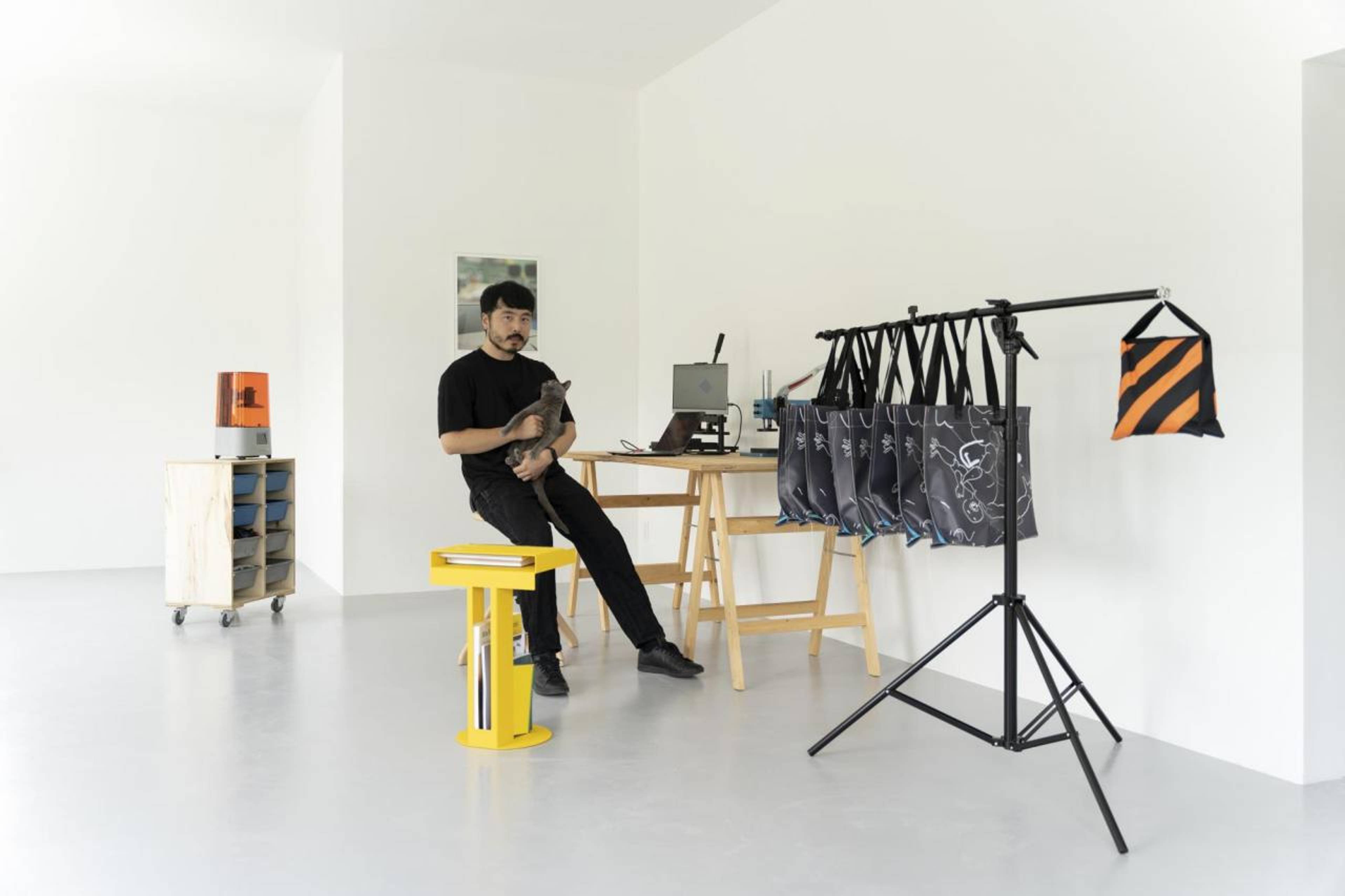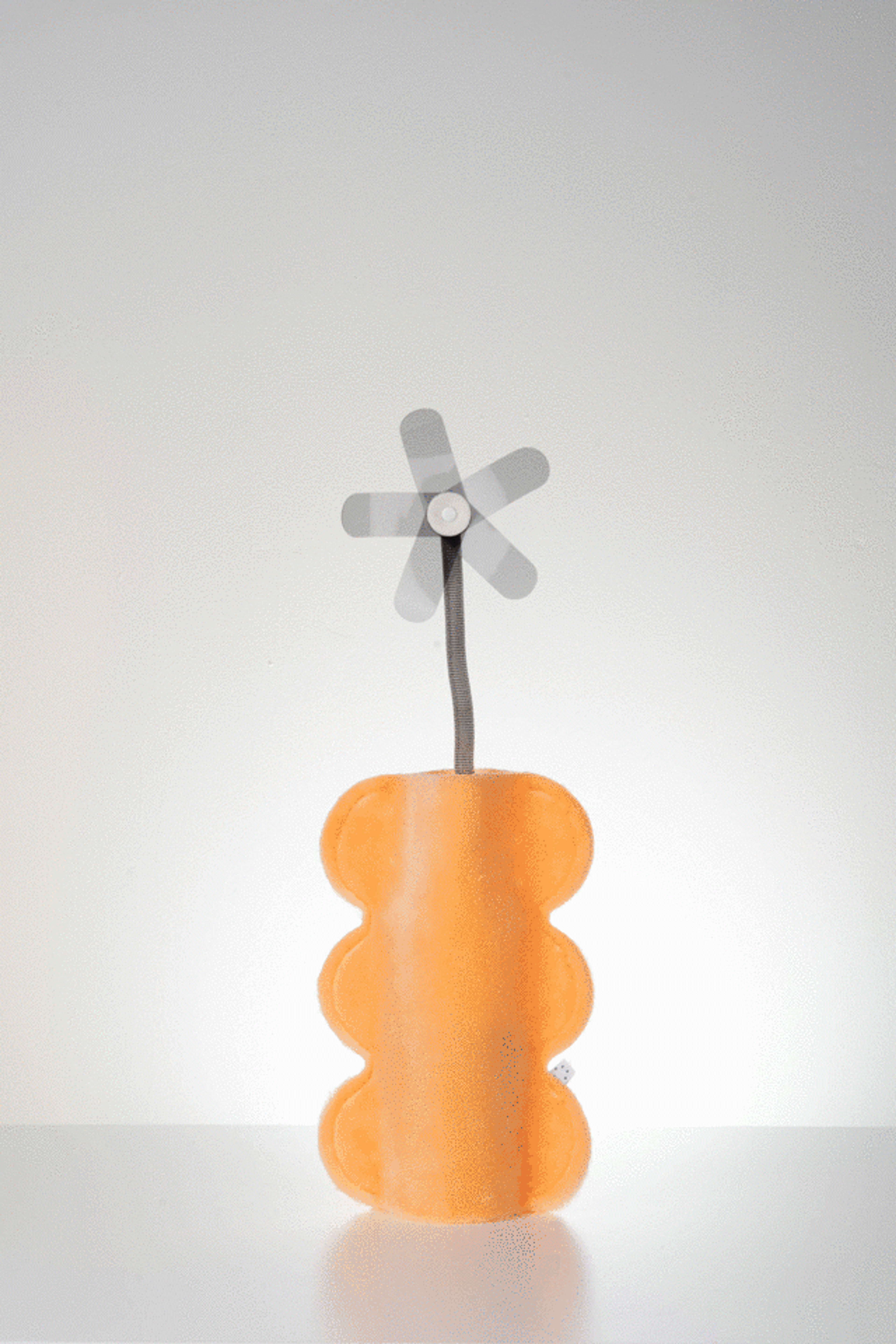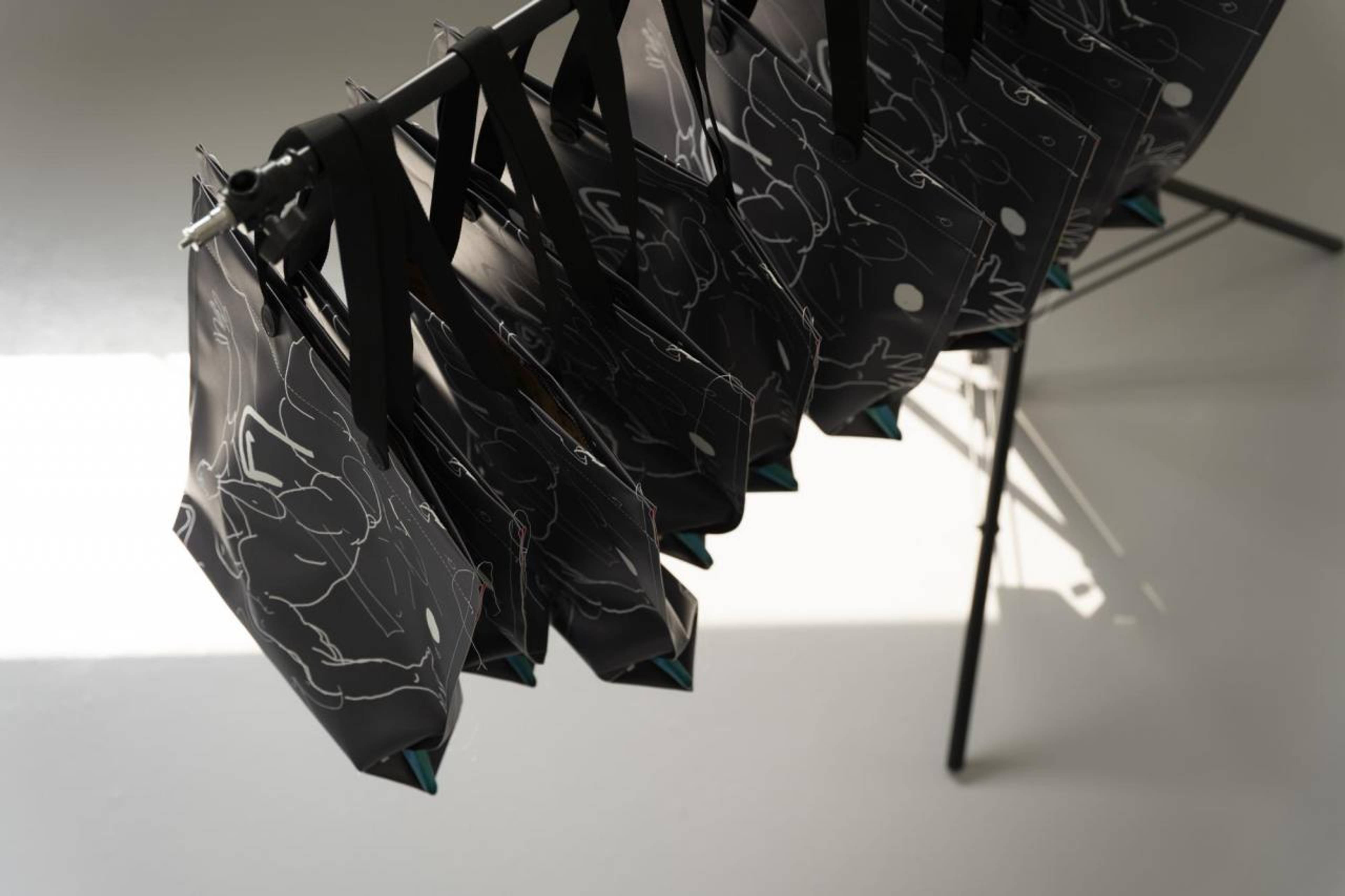Adina Glickstein: How did the collaboration with Spike come about?
Toshiki: I first encountered Spike Art Magazine at Art Basel a few years ago. I was impressed by the unique design and composition of the magazine itself, as if it were a work of art, and the strong individuality of the magazine, which I had never seen in Japan. I then headed to Berlin for a meeting with an artist team called ZEITGUISED, and coincidentally, there was a gallery run by Spike right near their atelier, and I was fascinated by the wonderful exhibition. Since then, I have wanted to work with Spike in some way. First of all, I asked Rita [Vitorelli, Spike’s founder and editor in chief] to help me as a judge for the Japan Photo Award, which I am planning and managing. The logo I got from Rita was so cool that I made it into a bag without her permission. I was worried Rita would be mad at me, but she loved it!
AG: How do you see the relationship between art, publishing, and fashion? It seems like all these threads are present in your collaborations. Besides Spike, you've also worked with DIS, most recently on a video project for last year's Art Basel OVR and, before that, for a film.
T: I feel that everything that happens in this world is always connected to me in some way. Therefore, I love to interact and share with people who have various perspectives, backgrounds, and ideas. Through my creative activities that cross over national borders, gender, and genres, I feel that a small paradigm shift is occurring within me every day, and I feel that there is a bright future ahead.
I believe that a good idea is appreciated when it is closely linked to the times. Therefore, as a producer, I believe that consideration for the environment is a very natural process.
AG: So elegant! How would you describe your design philosophy in general?
T: For me, design is a gift to a wonderful friend. In my mind, design is included in the desire to give a bouquet of flowers or chocolates as a gift. I want to make people happy. I want to surprise them. That's all. Everything else is just an afterthought.
AG: Why and how did you start working with recycled materials? How do you address the issues of consumption, waste, and sustainability that are becoming increasingly important in the fashion industry?
T: I believe that a good idea is appreciated when it is closely linked to the times. Therefore, as a producer, I believe that consideration for the environment is a very natural process. Sustainable materials are being developed one after another, and I would like to actively use such materials, but at the same time, I feel a sense of crisis about mass production. I believe that this is a challenge for all producers. In this context, last year I launched a brand called HERBBY to sell a vase called the Upcycled Flower Vase made from unused fabrics that are being discarded in large quantities by the fashion industry.
I also became a vegan about two years ago for environmental reasons, and moved my studio from Tokyo, where I have lived for many years, to a place with rich nature about two hours away, where I enjoy experimenting with life like Henry David Thoreau. This has given me a new appreciation for the beauty of Tokyo, and at the same time I am in awe of nature.
HERBBY Upcycled Flower Vase
AG: Beautiful! Beyond your conscious approach, what makes TOSHIKI bags stand apart from, say, other designer handbag brands? (Or, perhaps more apt in the art world, from the classic screen-printed canvas gallery tote?)
T: Many of the tote bags sold at galleries are very attractive. I personally buy many of them when I travel, and I have a collection of them. However, the mass-production method limits the expression of the products, which I think is the reason why they insist on small-lot production and handmade products with a high degree of freedom. However, mass-products also have their own charm…
AG: Right, fashion is so often a way of signifying one's interests (and even values) — almost like speaking a secret shared language with others who are "in the know." What do you hope people who buy the TOSHIKI x SPIKE bag are "saying" by carrying it? What's the secret message?
T: The bags are produced in small lots (30 pieces), and I have collaborated with M/M (PARIS) even to make bags in different colors for each piece. In other words, if I see someone with one of my bags, I can't help but talk to them. This question made me realize that a mechanism like a dating app is at work. I would love for singles to take it with them when they go out on the town.
AG: Bags are so intimate! They say something about us, and they contain and transport the objects that we want close to us throughout the day. It's like carrying around a little slice of home or comfort — especially living in a city like New York (or, probably, Tokyo or Berlin) where you don't really drive, so you have to carry all your shit for the whole day and night on your person at all times. A bag is a lifeline, really! So tell me: what are the essentials that you always have with you? What's in your bag!?
T: I actually always carry around a gallery tote bag that I can use when I have a lot of shopping to do. It's true that people in the city can't live without bags. In the near future, children will start to be born with bags on their stomachs, like little kangaroos.
TOSHIKI x SPIKE totes in the studio.
— The TOSHIKI x SPIKE Tote Bag “Falling Man” is available in a limited run in our online shop —




